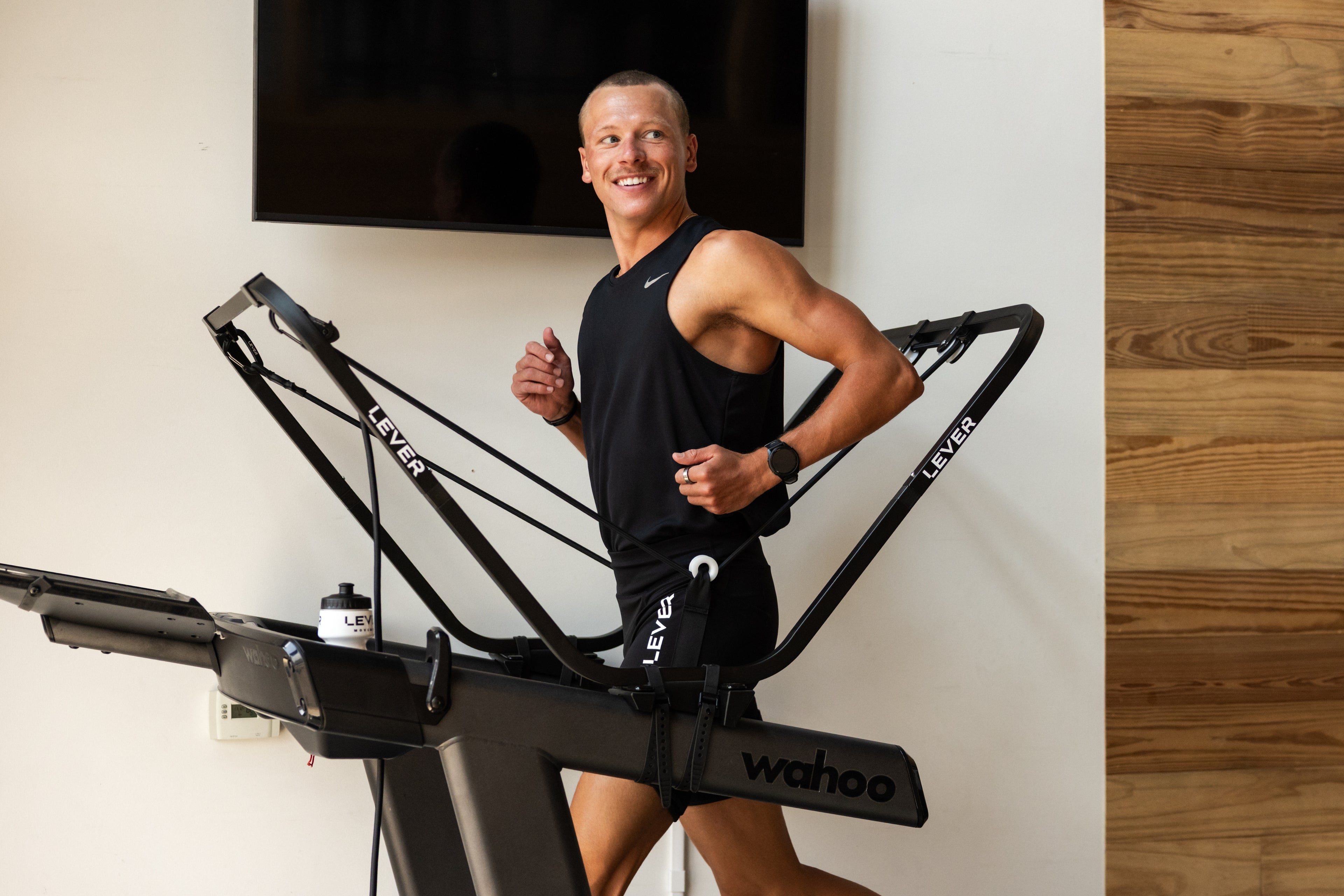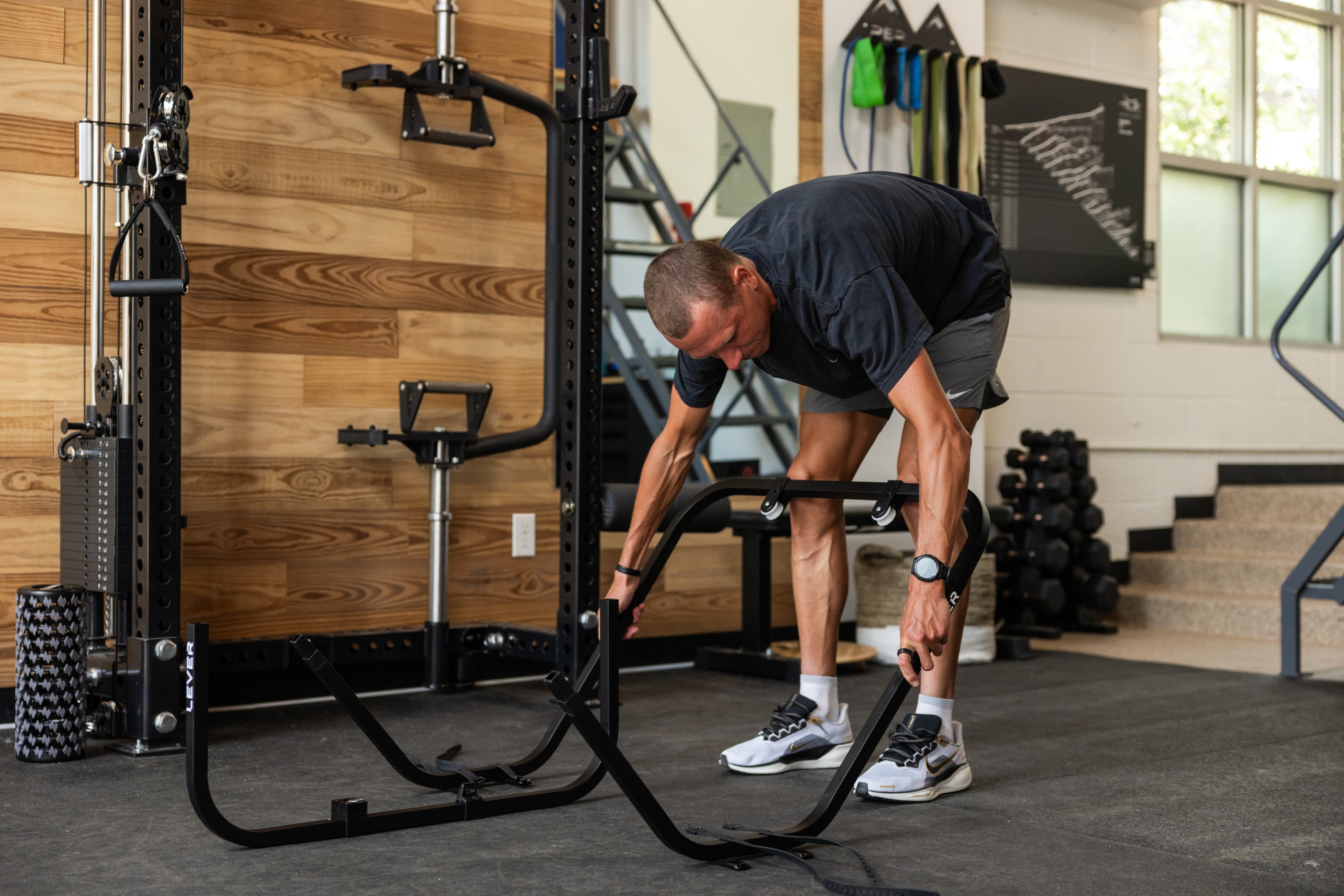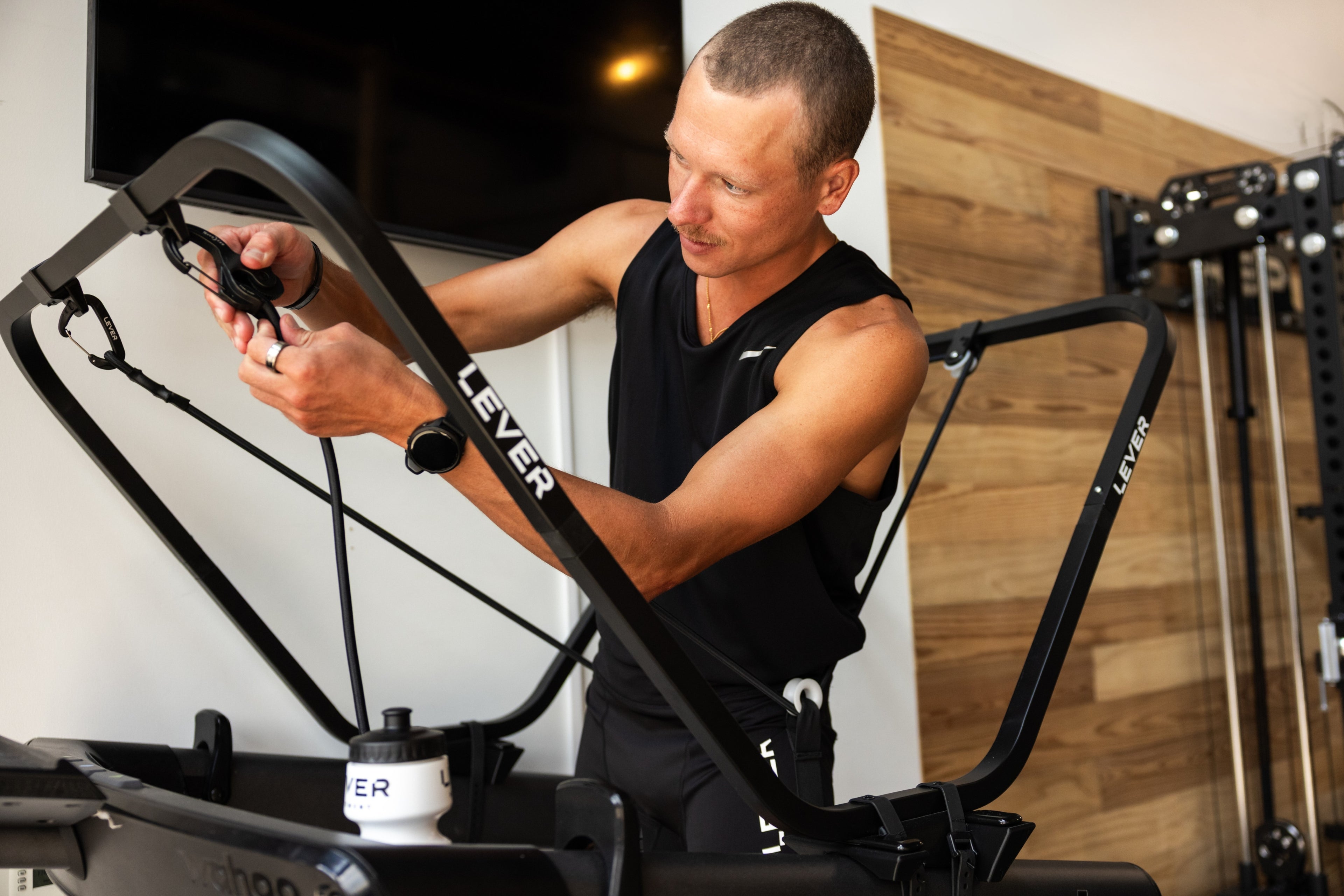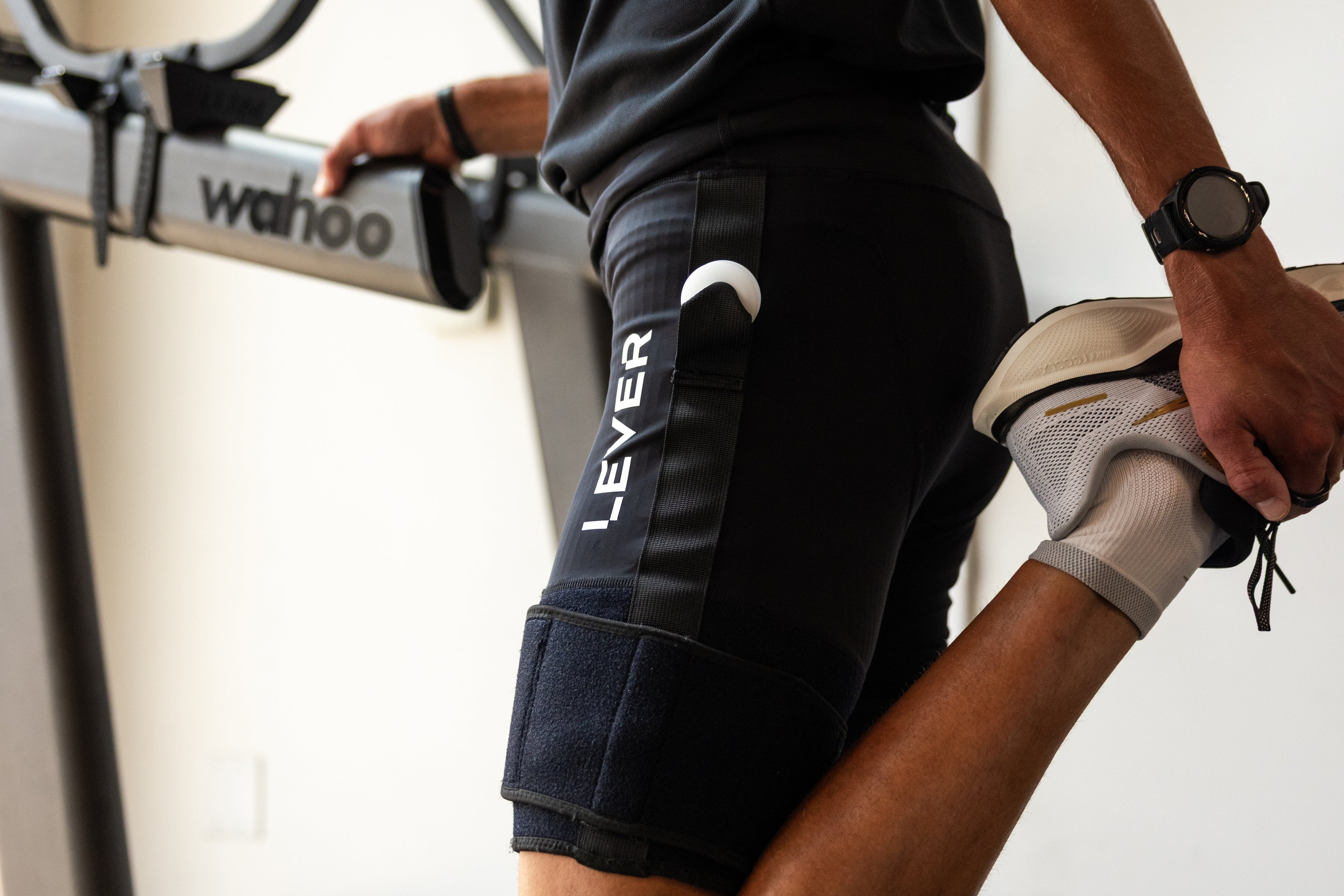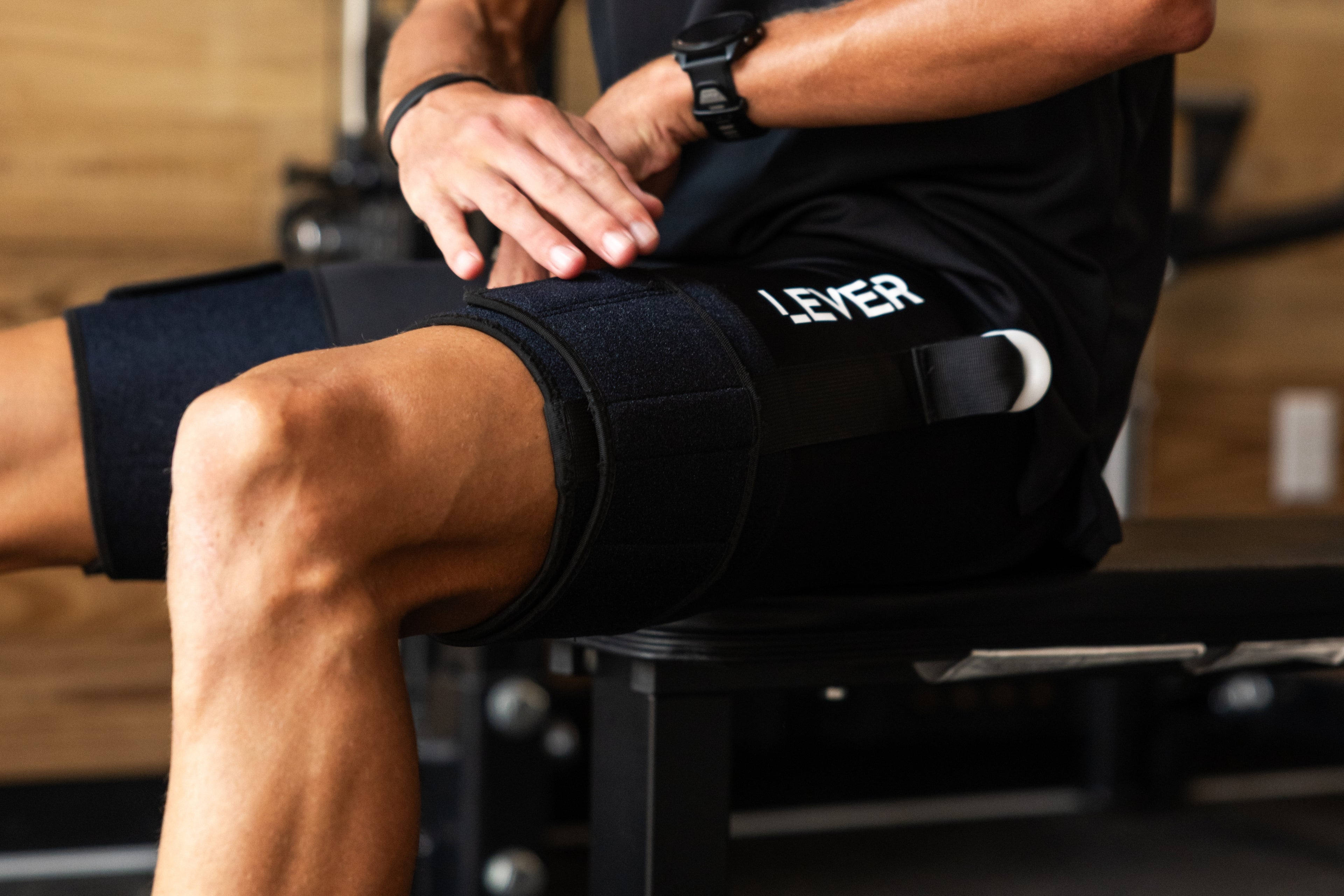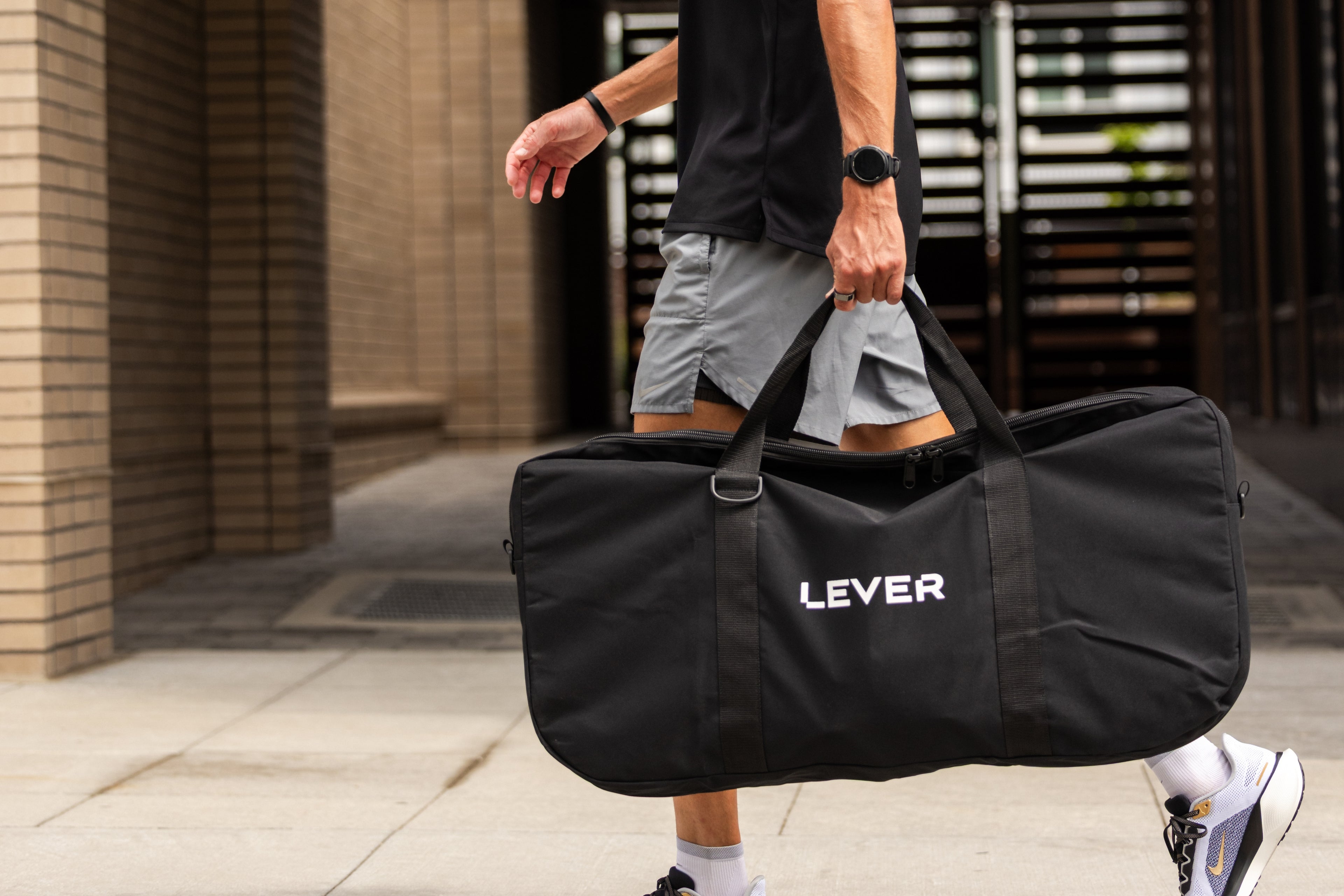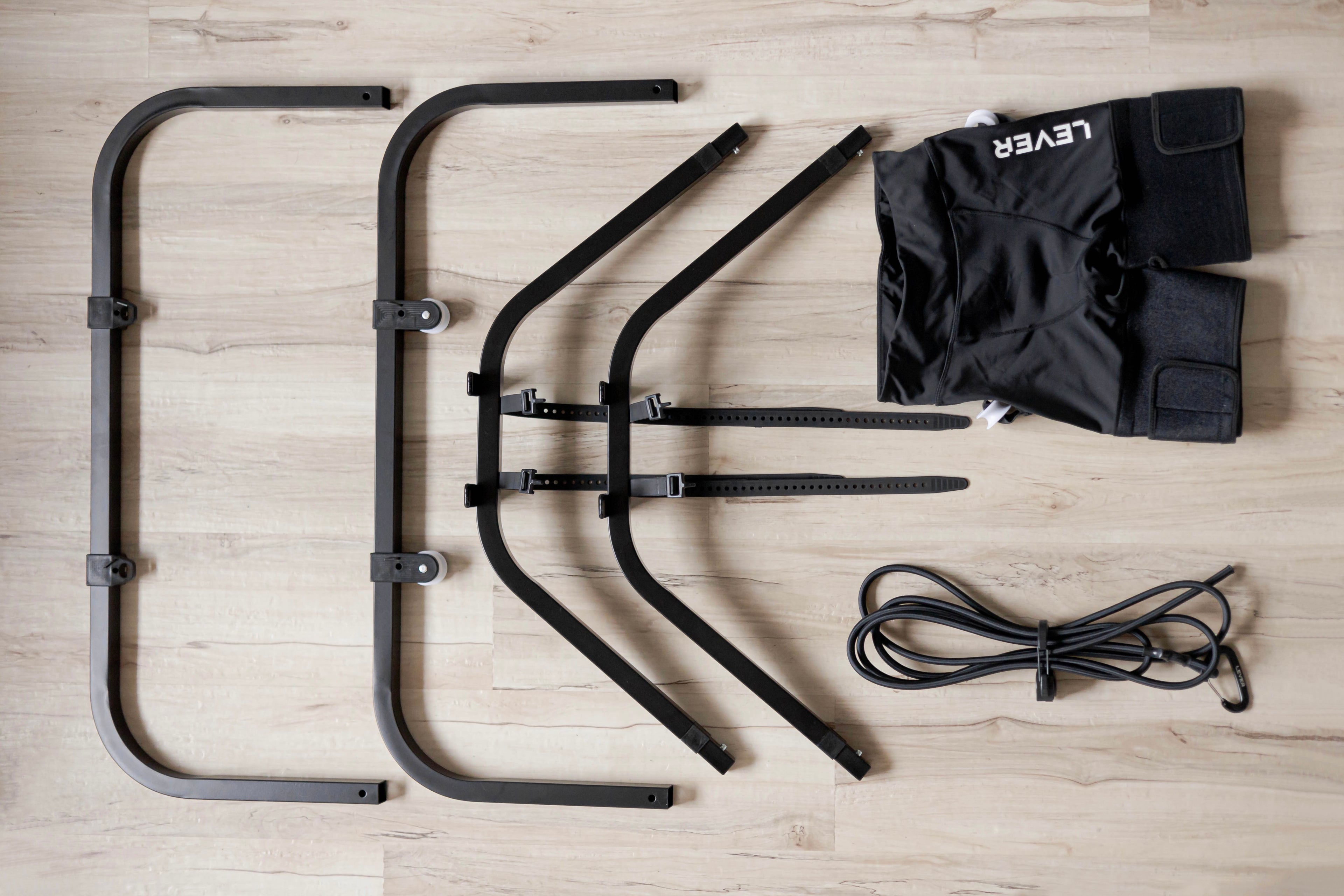In this LEVER Movement blog we’re going to take a closer look at a research study regarding the “Effect of speed and gradient on plantar force…”
A 2021 Study by Thomson, Whiteley, Hansen, Julius Welzel, Racinais, and Wilson aimed to look at the effects of different gradients on kinetics.
In this study they recruited ten well-trained healthy male runners to run on a treadmill at various levels of Body Weight Support. They recorded plantar force and ground contact time via a sensor in the shoe of each runner.
The varying levels of Body Weight Support included 60%, 80%, and 100% of body weight. The speeds tested ranged from 12, 15, 18, 21, and 24 kilometers per hour. The gradients ranged from -15%, -10%, -5%, 0, +5, +10, and +15% incline.
After completing the tests, the results showed “showed a linear relationship for maximum plantar force with bodyweight support and running speeds for level running.” Interestingly though: “The linear relationship, however, does not hold for negative gradients at speeds 12 & 15 km/h, with a relative 'dip' in maximum plantar force across all assisted bodyweight settings.”
The researchers concluded: “Maximum plantar force peaks are larger with faster running and smaller with more… Body Weight Support. Gradients made little difference except for a downhill grade of - 5% decreasing force peaks as compared to level or uphill running.”
An earlier 2017 study by Thomson, Einarsson, Witvrouw, and Whiteley found “Increasing running speed rather than increasing Body Weight Support was shown to have the strongest effect on the magnitude of Planter Force across the ranges of speeds.”
What does this mean for runners coming back from plantar injuries? If you’re trying to limit the force that your Plantar takes while running you should avoid faster speeds initially as faster speeds are more responsible for high peaks of force.











